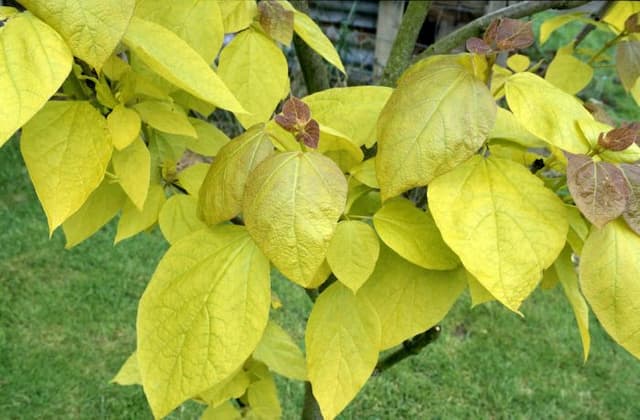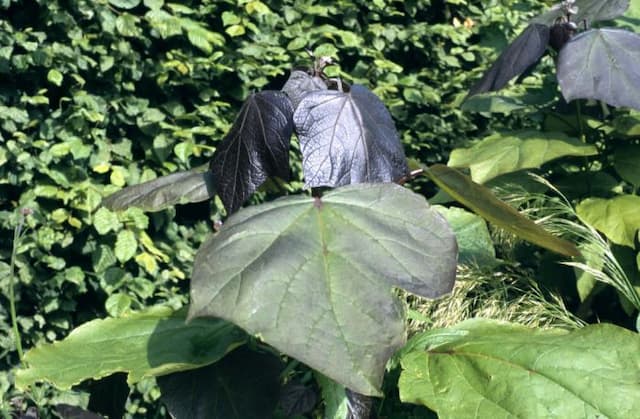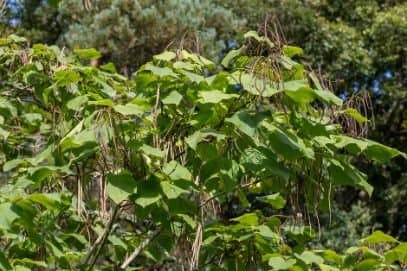Flame Vine Pyrostegia venusta






ABOUT
The plant commonly known as flame vine is a stunning spectacle when in bloom. Its foliage consists of evergreen leaves, which are compound with two to three leaflets and appear opposite each other on the stem. These leaflets are typically glossy and have a leathery texture, contributing to the plant's robust appearance. The most striking feature of the flame vine is undoubtedly its flowers. They come in fiery shades of orange, blooming profusely and creating a vivid display that resembles flames - hence the name. The flowers are tubular and elongated, arranged in clusters that cascade elegantly, providing a brilliant show of color. These blossoms are especially known for attracting hummingbirds, which are drawn to their nectar. The vine's growth habit is vigorous, and it can cling to surfaces with the aid of its tendrils, allowing it to spread gracefully over fences, walls, arbors, and other structures, transforming them into dynamic orange tapestries when in full bloom. The flame vine's dense foliage and striking flowers make it a popular choice for gardeners looking to add a splash of color to their landscape. Its flowering period usually occurs in the cooler months, which adds a burst of warmth to gardens when most other plants are not in peak bloom.
About this plant
 Names
NamesFamily
Bignoniaceae.
Synonyms
Flame Vine, Golden Shower, Orange Trumpet Vine, Flaming Trumpet.
Common names
Bignonia ignea, Bignonia venusta, Pyrostegia ignea.
 Toxicity
ToxicityTo humans
The most common common name of Pyrostegia venusta is Flame Vine. Flame Vine is not commonly reported as a toxic plant to humans. However, many plants can cause varying degrees of irritation if ingested or if skin contact occurs with plant sap. In general, it is advisable to avoid ingesting any part of ornamental plants like Flame Vine due to the potential for unknown or unanticipated reactions. If someone does ingest part of the Flame Vine and exhibits symptoms such as gastrointestinal upset, it is important to seek medical attention.
To pets
Flame Vine, also known as Pyrostegia venusta, is not widely known to be toxic to pets. However, it is essential to note that different animals can have a variety of reactions to plants. For this reason, it is always best practice to prevent pets from ingesting plants not specifically deemed safe for them. If a pet does consume Flame Vine and displays symptoms like vomiting, diarrhea, or unusual behavior, contacting a veterinarian is crucial to ensure the pet receives appropriate care.
 Characteristics
CharacteristicsLife cycle
Perennials
Foliage type
Evergreen
Color of leaves
Green
Flower color
Orange
Height
20 feet (6 meters)
Spread
10 feet (3 meters)
Plant type
Climber
Hardiness zones
9
Native area
Brazil
Benefits
 General Benefits
General Benefits- Aesthetic Appeal - Pyrostegia venusta, commonly known as Orange Trumpet Vine, is an ornamental plant that adds stunning visual interest to gardens and landscapes with its vibrant orange flowers.
- Fauna Attraction - The nectar-rich flowers attract pollinators such as bees, butterflies, and hummingbirds, promoting biodiversity.
- Shade Provision - With its dense foliage, the Orange Trumpet Vine can provide a natural canopy and shade in gardens and outdoor spaces.
- Privacy Screen - When grown on fences or trellises, it can act as a living barrier to enhance privacy.
- Erosion Control - The vine's root system can help stabilize soil and prevent erosion on slopes and banks.
- Cultural Significance - Pyrostegia venusta is often used in cultural and festive decorations in its native habitat, adding to the social value of the plant.
 Medical Properties
Medical Properties- Antitussive: Pyrostegia venusta is used for its cough-suppressing properties.
- Antimicrobial: Extracts of the plant have shown antimicrobial activity against certain bacteria and fungi.
- Anti-inflammatory: The plant is used to reduce inflammation.
- Antioxidant: Pyrostegia venusta contains compounds that are believed to have antioxidant properties.
- Analgesic: It is used to relieve pain in some traditional medicine practices.
- Antiviral: Some studies suggest the plant may have antiviral effects.
- Diaphoretic: The plant is used to induce perspiration.
- Expectorant: It is traditionally used to help in the expulsion of phlegm from the throat and lungs.
 Air-purifying Qualities
Air-purifying QualitiesThis plant is not specifically known for air purifying qualities.
 Other Uses
Other Uses- Architectural Ornamentation: Pyrostegia venusta, also known as flame vine, is often used to enhance the aesthetic of buildings, archways, and fences due to its dense foliage and vibrant orange flowers.
- Shade Provider: The dense growth of the flame vine can be strategically planted to create natural, living shade over pergolas or patios.
- Bee Attraction: Flame vine produces abundant nectar-filled flowers which attract pollinating bees, supporting local ecosystems and benefiting nearby fruit and vegetable gardens.
- Habitat for Wildlife: Its thick foliage offers shelter and nesting sites for various species of birds and small animals.
- Erosion Control: The robust root system of the flame vine can help stabilize slopes and prevent soil erosion.
- Privacy Screens: When grown on fences or trellises, flame vine acts as a privacy screen while providing a burst of color.
- Festive Decoration: During its blooming season, the flowers of the flame vine can be used for natural, biodegradable, and festive decor in cultural celebrations due to their striking appearance.
- Livestock Fencing: Farmers sometimes use the thick growth of flame vine as a deterrent along the edges of pastures to contain livestock within a specified area.
- Cultural Symbolism: In some cultures, the flame vine is planted in home gardens as a symbol of growth and vibrancy, reflecting the plant's vigorous nature.
- Photography Backdrop: The spectacular blooming of flame vine can serve as a stunning natural backdrop for photographers, especially for outdoor portrait sessions.
Interesting Facts
 Feng Shui
Feng ShuiThe Flame Vine is not used in Feng Shui practice.
 Zodiac Sign Compitability
Zodiac Sign CompitabilityThe Flame Vine is not used in astrology practice.
 Plant Symbolism
Plant Symbolism- Passion and Vibrancy: Pyrostegia venusta, commonly known as the flame vine, is known for its vivid orange flowers that can invoke feelings of enthusiasm and a zest for life.
- Celebration: The bright blossoming of this vine often coincides with festive seasons in certain cultures, symbolizing celebration and joy.
- Growth and Expansion: As a fast-growing plant, the flame vine can represent rapid growth and the expansion of ideas or ventures.
- Warmth: The warm color of its flowers can symbolize warmth of feelings, whether in relationships or in the welcoming of others.
 Water
WaterThe Flame Vine requires consistent moisture, especially during its growing and blooming seasons. Water the plant once a week, providing about 1-2 gallons for large plants or 20-30 ounces for smaller potted specimens, depending on the size and age of the vine. The objective is to maintain a moist but not waterlogged soil. During the winter or in cooler weather, reduce water to once every two weeks, being careful not to let the soil dry out completely.
 Light
LightFlame Vine thrives in full sun to partial shade. The best spot for this plant is a location where it can receive at least 6 hours of direct sunlight daily. However, in particularly hot climates, afternoon shade can prevent scorching. It's adaptable but will flower best with ample sunlight.
 Temperature
TemperatureThe Flame Vine prefers warm temperatures and does not tolerate frost well. The ideal temperature range for this plant is between 60°F and 85°F. It can survive minimum temperatures down to around 20°F, but prolonged exposure to cold will damage the plant.
 Pruning
PruningPruning Flame Vine is essential for controlling its growth and encouraging more blooms. Trim it back after flowering has finished, usually in late winter or early spring, removing any dead or overcrowded branches. This helps maintain the vine's shape and encourages new growth. Prune every year or every other year depending on the plant's vigor.
 Cleaning
CleaningAs needed
 Soil
SoilFlame Vine thrives in well-drained, fertile soil with a pH between 6.1 and 6.5. A mix containing loam, peat, and sharp sand in equal parts can provide good aeration and nutrients. Regular fertilization during the growing season will support its vigorous growth.
 Repotting
RepottingThe Flame Vine should be repotted every 2 to 3 years. Choose a pot that is one size larger than the current one to give the roots room to grow.
 Humidity & Misting
Humidity & MistingFlame Vine prefers moderate to high humidity levels. A range of about 40-80% is ideal for this plant to flourish without additional humidity control measures.
 Suitable locations
Suitable locationsIndoor
Provide bright light and support for climbing indoors for the Flame Vine.
Outdoor
Ensure full sun exposure and support for climbing outdoor for the Flame Vine.
Hardiness zone
9-11 USDA
 Life cycle
Life cyclePyrostegia venusta, commonly known as Flame Vine or Orange Trumpet Vine, begins its life cycle as a seed that germinates in moist, well-drained soil in a warm environment. Following germination, the seedling establishes itself and develops a root system; it then starts to grow vigorously, quickly turning into a climbing vine with lush, green foliage. As the plant matures, it produces clusters of striking orange trumpet-shaped flowers, especially abundant in winter to spring, attracting pollinators such as bees and hummingbirds. After pollination, the flowers develop into long, slender seed pods containing numerous seeds. These pods eventually dry and release the seeds, which can be dispersed by wind or gravity. Once dispersed, the seeds can initiate a new life cycle if they land in favorable conditions.
 Propogation
PropogationPropogation time
Spring-Early Summer
Propogation: The most popular method of propagating the Flame Vine (Pyrostegia venusta) is through semi-hardwood cuttings. This is typically done in the late summer months. To propagate by this method, a 4 to 6-inch cutting is taken from a healthy, vigorous part of the plant, with several sets of leaves. The lower leaves are removed, and the cut end may be dipped in a rooting hormone powder to encourage root growth. The cutting is then planted in a well-draining soil mix and kept moist. A plastic cover can be used to maintain humidity around the cutting, which supports root development. With proper care, roots will develop over several weeks, after which the new Flame Vine plant can be transferred to a larger pot or directly into the garden.








